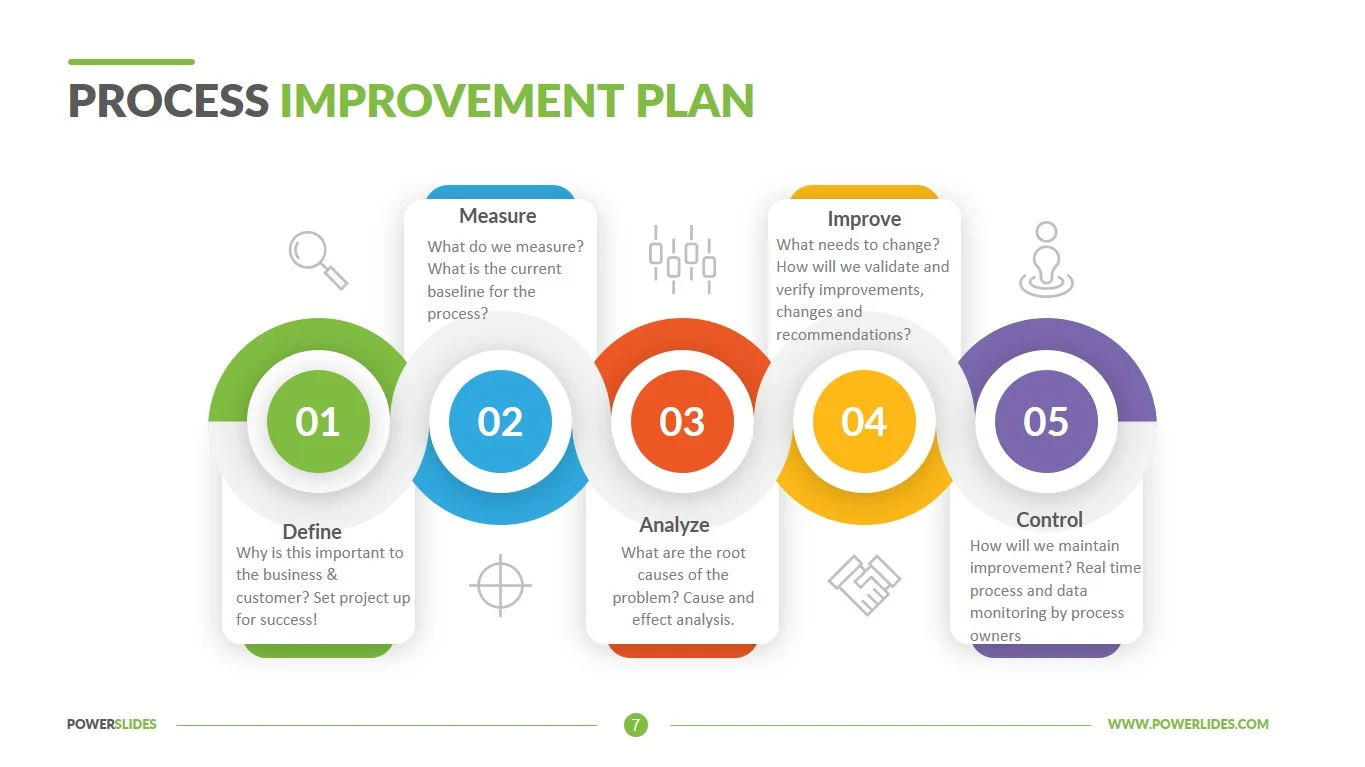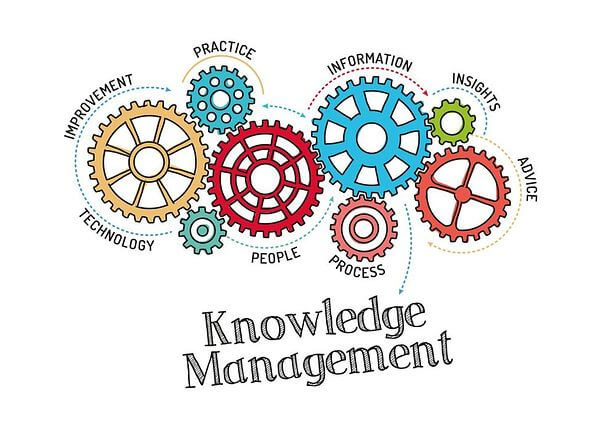
For small businesses, the path to growth and efficiency hinges on the smart management of everyday operations.
Process implementation aims to streamline how this work gets done.
Process implementation (PI) is about setting up systems that work consistently and predictably, allowing small teams to focus on growth rather than getting bogged down by procedural inefficiencies. With PI, businesses can create a solid foundation for scaling up, making their operations more resilient and adaptable to change.
In this article, we’ll dig deep into:
- What process implementation is, and how it’s used
- Why strategic PI is essential to business success
- What’s included in a process implementation plan
- How to plan and implement new processes into routine operations
Let’s get started.
What is Process Implementation & How Is It Used?
Process implementation refers to the strategic, methodical introduction and execution of a uniform workflow made for a specific business purpose.
These business purposes include:
- Streamlining operations by simplifying tasks and eliminating redundancies
- Enhancing quality control by establishing consistent procedural standards
- Preparing for and facilitating scale by designing processes that accommodate growth without requiring work stoppages or other operational sacrifices
Strategic process implementation is always backed by comprehensive documentation — i.e., a process implementation plan. This plan serves as a roadmap not just for the immediate implementation of a new process, but for how this new process fits into the bigger picture within your operations.
(Note: Process implementation plans are similar but not identical to process improvement plans. For a detailed look at how those are put together, check out this post on our blog.)
The Need for Strategic Process Implementation
For growing small businesses, strategic process implementation is essential not just to stay competitive, but also to weather the many challenges that will inevitably come your way.
A more intentional approach can lead to a number of more far-reaching benefits for your company, too.
Align Operational Processes with Business Goals
Perhaps most importantly, strategic process implementation ensures that every process you introduce helps bring you closer to reaching your overarching business goals.
For one, you won’t simply be introducing processes for the sake of doing so. Rather, this approach will specifically point you toward the areas of your operation that have the most impact on your team’s productivity — and help you identify the spots where systematizing things will do the most good.
Creating business requirement documentation ensures the success of your process implementation initiatives.
It also allows you to maintain alignment between what you say you do as a company, and what you actually do as a company. Along with a standardized approach to core processes that’s in-line with your company values, you’ll have the documentation to prove it to stakeholders as necessary.
Improve Operational Productivity
A strategic and standard approach to a given process will almost always be more effective and efficient than a haphazard one.
In a practical sense, you’ll be streamlining workflows, removing inefficiencies, and fully enabling your employees to accomplish routine tasks with ease.
As the task becomes more routine and automatic, team members will only become more productive — and may discover additional ways to increase their output along the way.
And, with multiple related processes running like clockwork, your team’s overall productivity will absolutely skyrocket.
Learn how an insurance company’s productivity increased by 7x after implementing Helpjuice.
Improve Product & Service Quality
Introducing new standard operating procedures regarding product development or service provision will allow you to improve both over time.
For one, you’ll produce consistent (and consistently high-value) output with each repetition of the process in question. Even your more complex processes will be systematized to the point of being nearly automatic — with quality never dipping below a clearly-defined threshold.
And, again, this standard of quality will only continue to increase as related processes begin working more synergistically. In certain cases, this can actually lead to innovative breakthroughs that end up becoming the new standard for your team.
Minimize Waste (& Reinvest Surplus Resources)
Since you’ll be running more efficiently, you’ll inherently be expending fewer resources to achieve the same performance standards (and then some).
In turn, you can:
- Reallocate your current resources to more impactful ventures, and/or
- Plan for less resource usage moving forward
More importantly, your employees will be spending less time, energy, and mental power on tasks that have become automatic to them. This in itself can lead to their having more time and energy…
- To focus on more intensive and self-directed tasks
- To fine-tune their approach to specific tasks and operations
- To attend training sessions and focus on professional development
…and otherwise optimize their efforts while working for your team.
Ensure Compliance & Safety
Having clearly-defined and optimized processes in place ensures all operations run safely and in compliance with industry regulations and the law.
(In many instances, having these processes in place — and documented with clarity — is actually required to maintain compliance.)
Moreover, creating standard emergency processes can help you mitigate danger and minimize damage should an incident occur. Similarly, your team will be better able to navigate around certain issues while working to get things back to 100% at the same time.
Make Targeted Improvements
Once you’ve implemented a new process, you’ll shift your focus toward making continuous improvements to it.
Incidentally, the uniformity of these processes makes it easier to
- Identify where key improvements can be made, and
- Implement them without disrupting the process as is
(In contrast, it’d be nearly impossible to identify specifically what’s going wrong with a certain operation if everyone’s just kinda winging it.)
Along this same line…
Prepare for the Future
Creating uniform processes to follow today can help you navigate and adapt to future changes in your organization or industry.
Firstly, you’ll have a strong foundational process in place that you’ll be building on over time. You’ll know “what works” from a strategic standpoint — and can use this knowledge to modernize your processes as needed.
Secondly, you can build your new processes to accommodate future improvements and, as mentioned above, make these changes without interrupting your current operations.
Process Implementation Plan: Sections and Template
Let’s now dig into the main sections an effective process implementation plan should include.
As we go through each, we’ll provide an example based on the experiences of a current Helpjuice client as they implemented our knowledge base software into their operations.
Executive Summary
The executive summary provides a brief overview of the implementation plan, highlighting:
- The process to be implemented
- The purpose of and rationale behind implementation
- The expected outcomes and, potentially, future steps to take upon reaching these goals
This section need not be more than a couple sentences, as you’ll get more in-depth later on.
Example: Our company will leverage Helpjuice to centralize and enhance our documentation site, resulting in a 30% reduction in support tickets and doubling the speed of onboarding for team members and customers.
Background and Objectives
Here, you’ll include the context necessary to understand why the new process is needed.
This section should focus on both the problems currently being encountered, as well as the opportunities that the upcoming change will lead to. You’ll also include the operational and business goals for the initiative in this section.
Example: To elevate customer and user experience, our company aims to streamline our documentation and training materials into an organized online platform, addressing challenges in documentation collection, updating, and management
Process Overview
The process overview is a high-level description of both the current process and the proposed process, highlighting the key changes and improvements to be made.
Example: Transitioning from bundled product documentation to an online knowledge base, incorporating user-friendly navigation and YouTube integration for training materials.
Scope
In this section, you’ll define which departments, operational functions, and products/services will be affected by the new process.
In defining the scope of the process, you’ll also explain the boundaries of the initiative in its current state. This adds onto the above section, as it provides further context for the project — and can potentially hint at potential advancements for the future.
Example: The initiative encompasses creating a resource center to host product manuals, guides, and training materials, accessible globally to facilitate updates by team members from different locations.
Roles and Responsibilities
The goal of this section is to identify the key stakeholders involved in the planning and execution of the new plan.
Once you’ve identified these key players, you’ll then define how they’re involved in each implementation phase — and how certain roles will collaborate throughout the initiative.
Example:
- CTO/Chief Architect will lead the initiative
- Global team members will be responsible for content updates
- IT support handles integration and customization
Implementation Plan
A comprehensive, step-by-step description of your implementation plan.
This more lengthy section might include information on:
- Stages or phases of implementation
- Timelines and accompanying milestones
- Additional info for each stage as necessary
Example:
- Preparation and Planning: Evaluate current documentation delivery methods, select appropriate software such as a knowledge base based on its UI and features after considering multiple solutions.
- Software Implementation and Pilot Testing: Develop the knowledge base structure, embed employee training videos, and pilot the platform internally before launch.
- Full Rollout: Officially launch the knowledge base to customers, integrating it into the support and training processes.
- Post-Implementation: Monitor support ticket volume and onboarding speeds, using analytics to continuously refine content and usability.
Resources
A comprehensive list of resources required for the process implementation, including personnel, technology, materials, and financial resources.
Example:
- Investment in knowledge base software
- Resources for creating and managing employee video training content
Training Required
Explains how stakeholders will be informed of and educated on the new process.
This section should include information regarding:
- Training methods and sessions utilized
- Communication channels used
- Documentation of training materials and assessment
Example: Comprehensive training for all content contributors on navigating our knowledge base solution, embedding multimedia, and analyzing user engagement and content effectiveness.
Risk Management and Emergency Planning
This crucial section identifies the potential risks and challenges that may arise during implementation and/or throughout regular operation.
Moreover, it details the step-by-step processes to follow to help minimize damage should emergencies arise.
Example:Plan for initial user resistance by creating detailed guides and offering support; ensure backup processes for content updates in case of technical issues.
Monitoring and Evaluation
This section serves two purposes:
First, it reiterates, clarifies, and solidifies the success metrics and KPIs for the initiative. From there, it will detail the process for ongoing monitoring, assessment, and continuous improvement with regard to the newly-implemented process.
Example: Use analytics to track documentation usage, search efficiency, and user feedback, aiming for a continuous 30% reduction in support tickets and maintaining enhanced onboarding speeds.
Approvals and Administrative Documentation
Finally, you’ll have the necessary stakeholders sign off on the plan as needed.
Example: Obtain formal approval from leadership team for implementation, ensuring alignment with strategic customer support and training enhancement goals.
Process Implementation: Steps and Best Practices
As worthwhile as it is to do, creating and implementing a new process is an involved and potentially intensive undertaking.
But it doesn’t have to be overwhelming.
Here, we’ll take you through each step of the process — and offer some key tips to help get the most out of each step along the way.
1. Identify the Need for a Process
As we discussed earlier, one of the main benefits of implementing a new process is that you can focus on doing so where it will have the most impact.
That said, your first order of business will be to determine where, exactly, that is.
In other words, you’ll need to analyze your current operations to identify the pain points, inefficiencies, and bottlenecks that are causing the most damage to your overall productivity. Be sure to use both team performance data and stakeholder feedback to ensure no stone stays unturned, here.
Once these areas have been identified, conducting a SWOT analysis can help you further identify which one to focus on first. In many cases, you might find that addressing a root cause via process implementation eliminates other bottlenecks downstream — making future initiatives just that much easier to tackle.
2. Create a Planning Team
Your next order of business is to create a committee to help develop, implement, and manage the new process.
This committee should be cross-functional, interdepartmental, and otherwise representative of those involved with the new process. This will allow all stakeholders to understand the issue from multiple perspectives — in turn allowing the team to create a more comprehensive, procedural solution.
Pro Tip: Transform your planning team into a community of practice post-implementation for continuous growth and development.
Give your team ample time to discuss the issue, brainstorm possible solutions, and otherwise engage with one another. Creating dedicated Slack channels or intranet pages can make communication more focused, but also more free, from the start of the initiative.
3. Set Clear Objectives and Goals
Once your team has gotten all on the same page, it’s time to set your goals in stone.
Using the SMART framework here is crucial, for a few reasons:
- It ensures alignment between operational achievements and bottom-line results.
- It ensures all internal processes contribute to the company’s long-term vision.
- It creates attainable milestones while motivating employees to optimize their efforts.
To be sure, your planning team should be as involved as possible in the creation of these goals. That said, it’s up to you to make the connection and maintain alignment between their determined operational goals and your higher-level business goals.
4. Map Out the Process
Now, it’s time to actually create the standardized process to be implemented.
This will, of course, look quite different depending on the domain and complexity of the process in focus. And, even the simplest processes should be built with the flexibility needed to quickly change things up should the need arise.
Once you’ve mapped out the process, you’ll need to document it. For digital processes, you can use Wizardshot to automatically generate documentation simply by walking through the process on any device.
Along with workflow documentation, this is where you’ll document the stakeholders, resources, and training required for successful implementation. For more complex processes, be sure to clarify when and how these things will be needed at each phase of the initiative.
Finally, create the timeline for implementation and define the milestones and relevant KPIs you’ll be aiming to reach throughout the initiative.
5. Communicate the Process
After documenting the process in full, you’ll need to ensure all stakeholders and other involved parties:
- Are directly provided with this documentation through the proper channels, and
- Have open access to said documentation via a centralized digital location
Using an internal knowledge base to house your process documentation is not only crucial for accessibility purposes, but also to allow team members to explore the new process more completely. By creating and linking to additional knowledge content, you’ll ensure all stakeholders approach the process as strategically and productively as possible.
Here’s also where you can start focusing your team’s attention on the training sessions they’ll need to attend to effectively work through the process.
6. Implement and Integrate the Process
You’ll now finally be ready to actually put the process in place and get things moving in the right direction.
But you don’t want to rush it.
Instead, consider conducting a pilot test before rolling the process out in full. Allow a small team — possibly your planning committee — to test the process in a simulated or low-risk setting to iron out any kinks before pushing it live.
This initial phase can also help you identify knowledge and skills gaps that you’ll need to fill within your team as you roll out the process. Remember: Ongoing training to help improve employee performance will almost certainly be necessary to enable your organization to reach the goals you’ve set for the initiative.
7. Monitor and Adjust the Process as Needed
As we’ve established, ongoing assessment and improvement ensures your existing processes are operating as planned (or better).
While AI can assist with real-time performance and data monitoring, maintaining open lines of communication with your team will ensure the right adjustments are made over time. Similarly, holding routine meetings will keep your team in alignment and onboard with any foundational changes that need to be made.
A strong approach to change management is needed to both implement and improve systematic processes.
Using Helpjuice to Supercharge Process Implementation
From planning to integration — and beyond — process implementation relies heavily on both organizational knowledge and knowledge documentation.
And the best way to manage this documentation is with a modern knowledge base software like Helpjuice. With our software, you’ll easily be able to:
Collaborate with your team as you create new processes and related documents
Provide crucial knowledge to your planning and operational team as needed
Document best practices for process implementation and change management
And, again, our newly-developed Wizardshot app makes process documentation an AI-driven breeze.
Want to learn more? Schedule a demo with Helpjuice’s team today!




